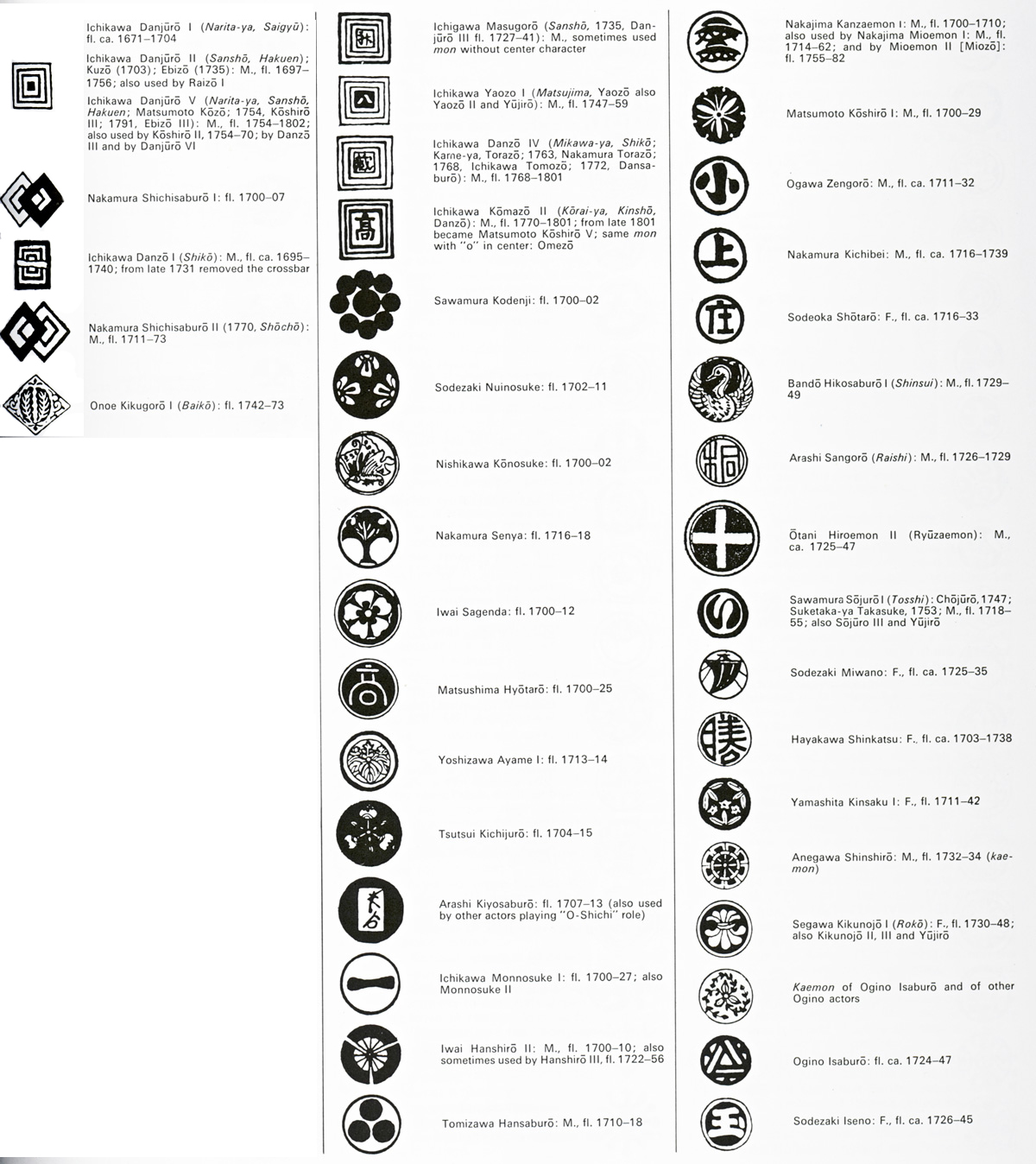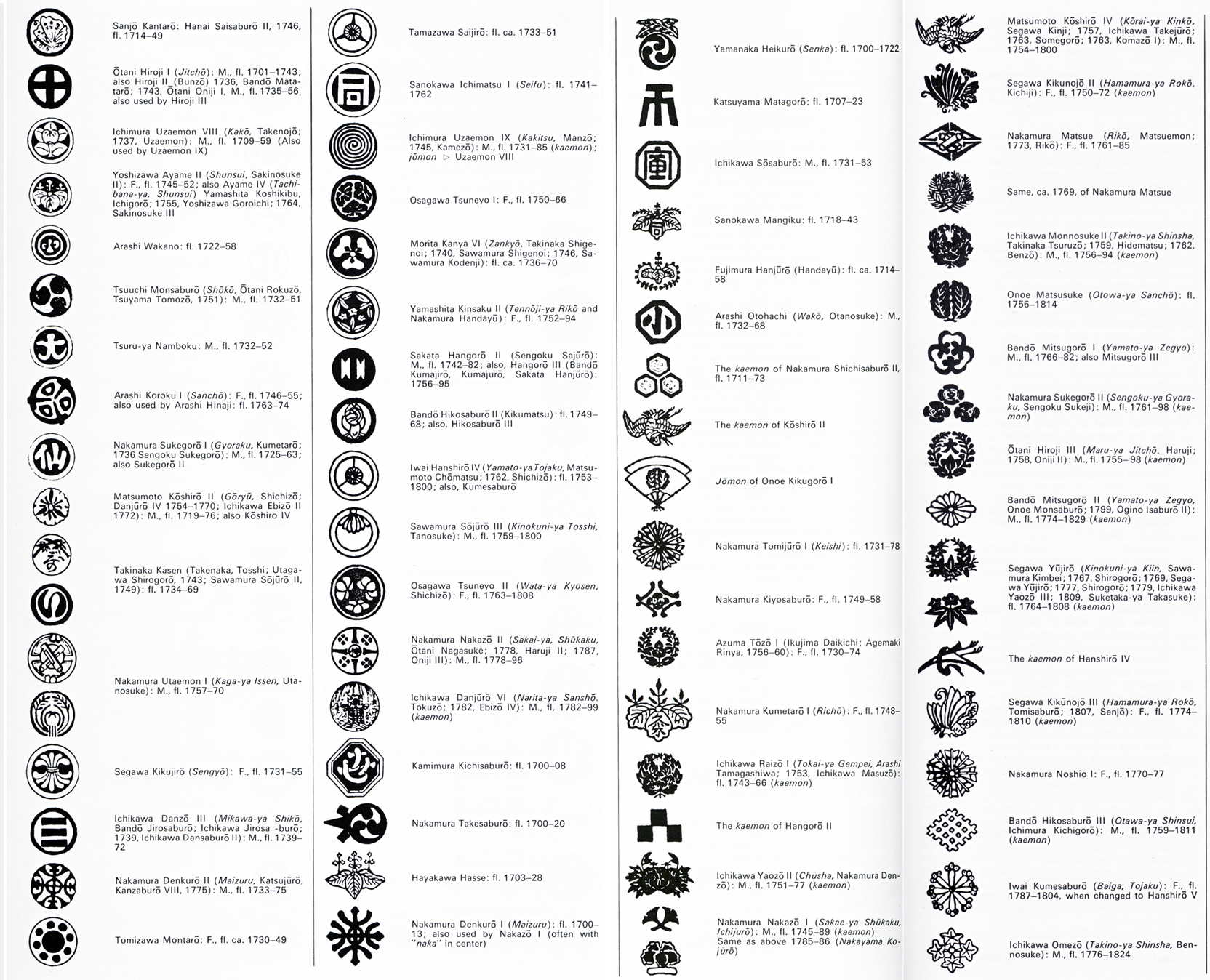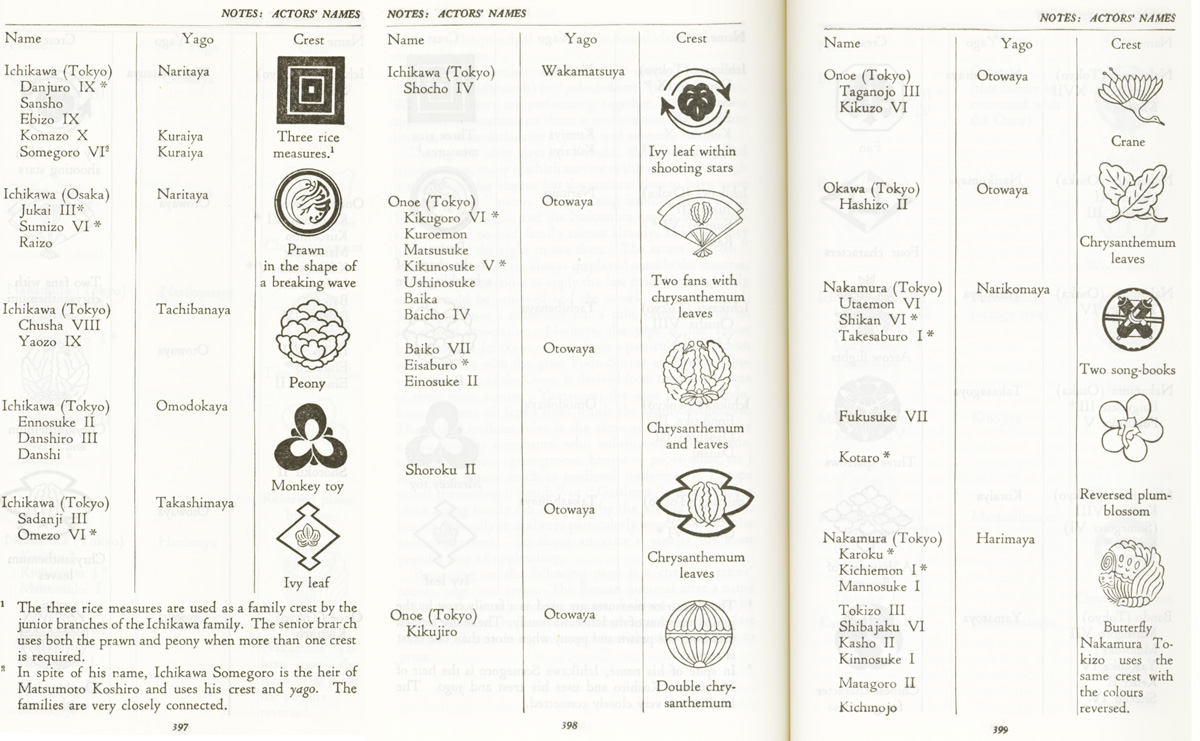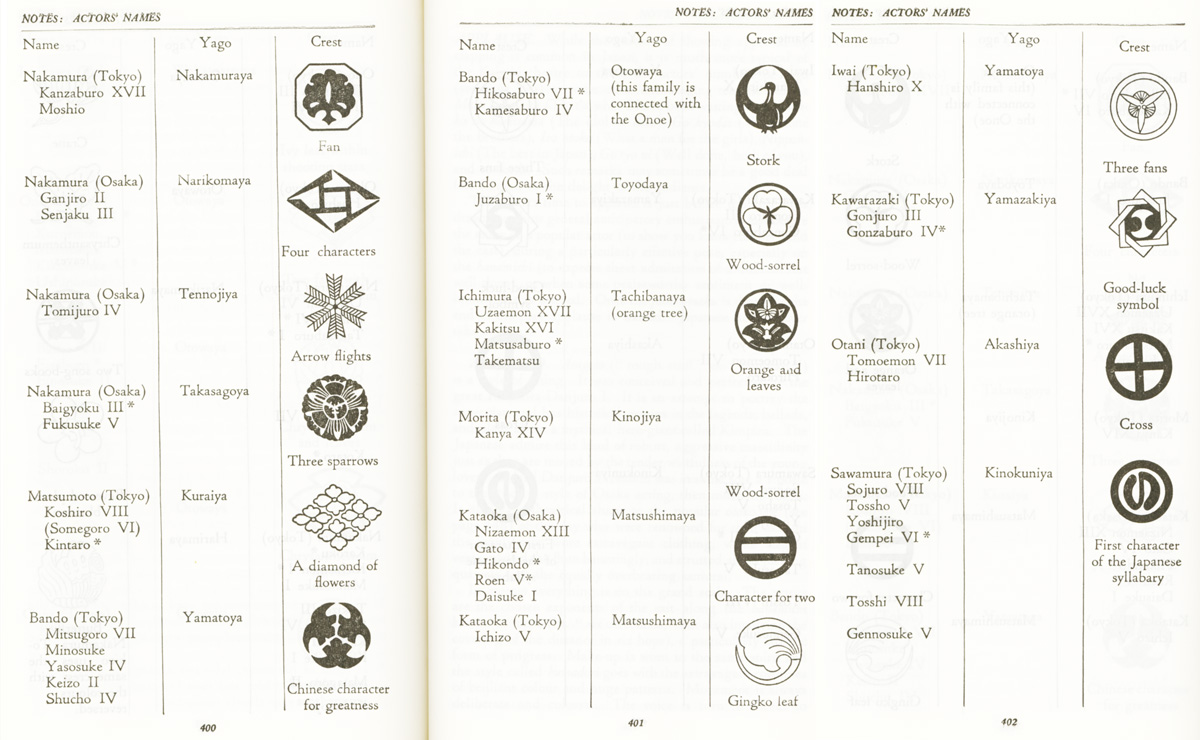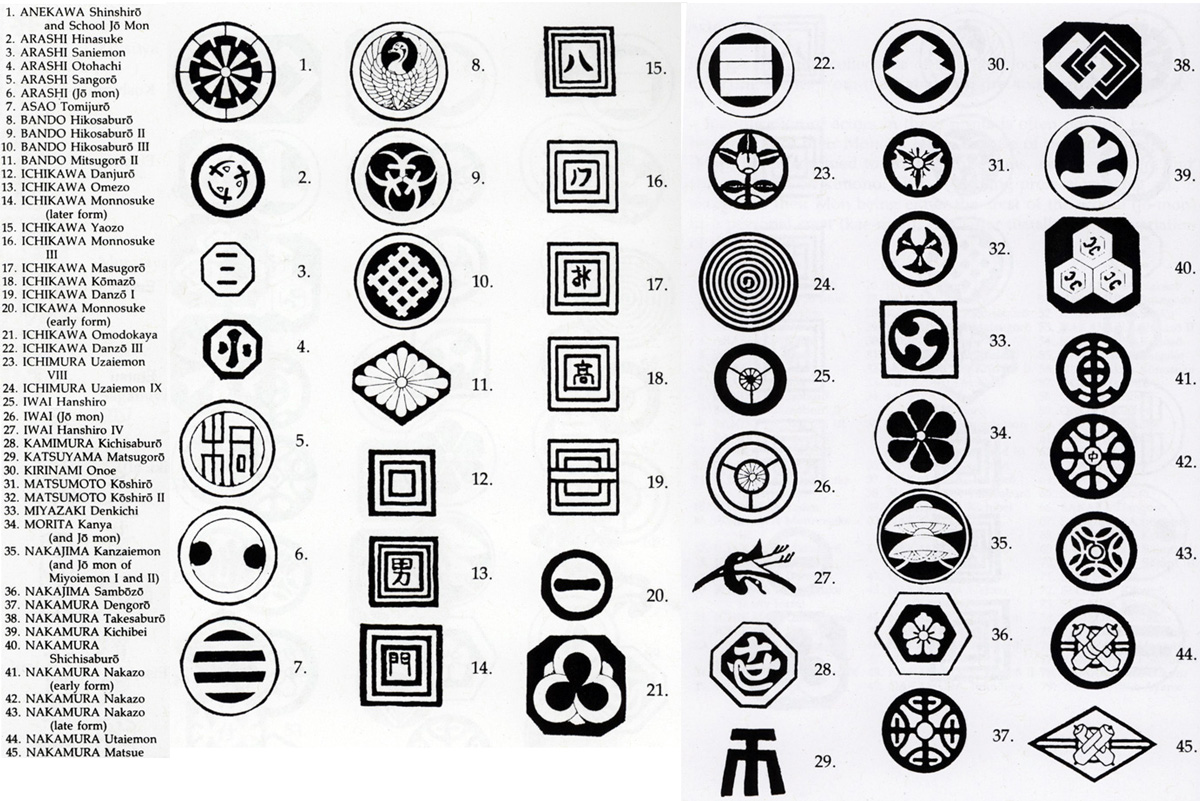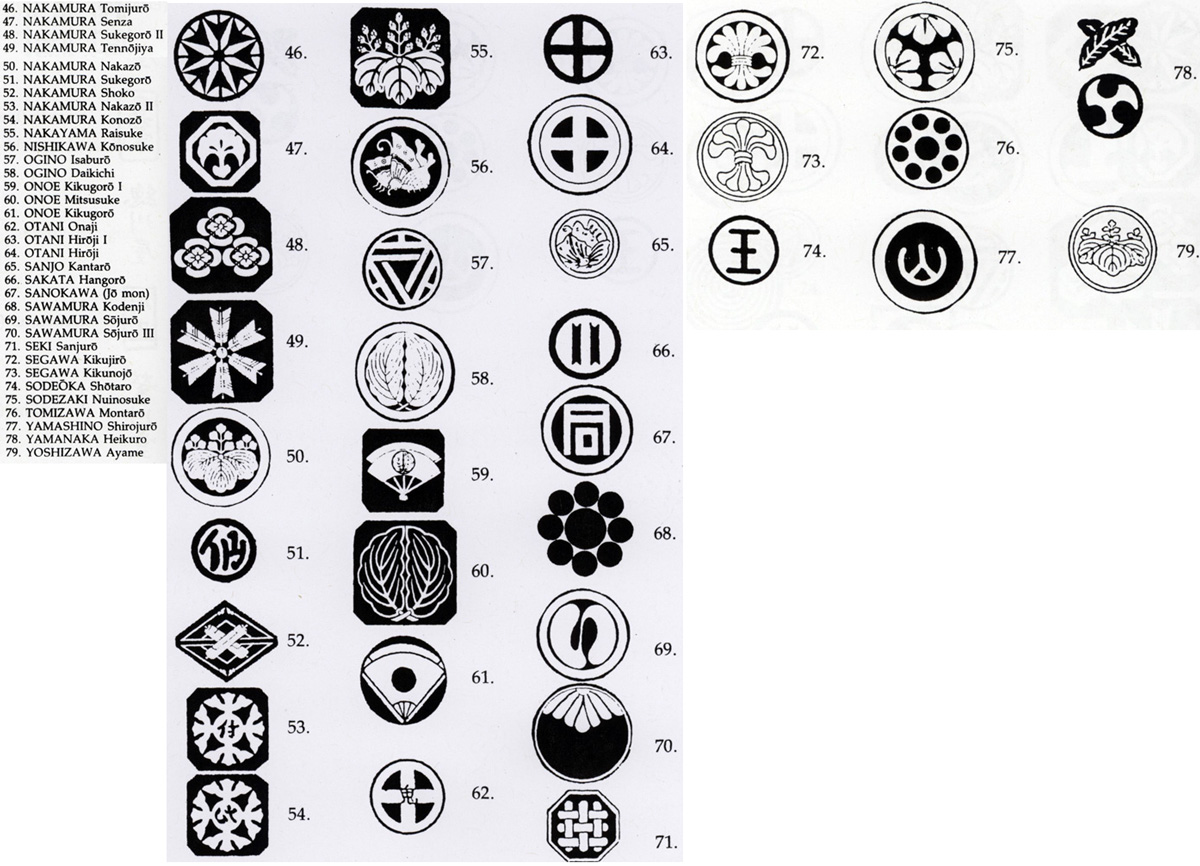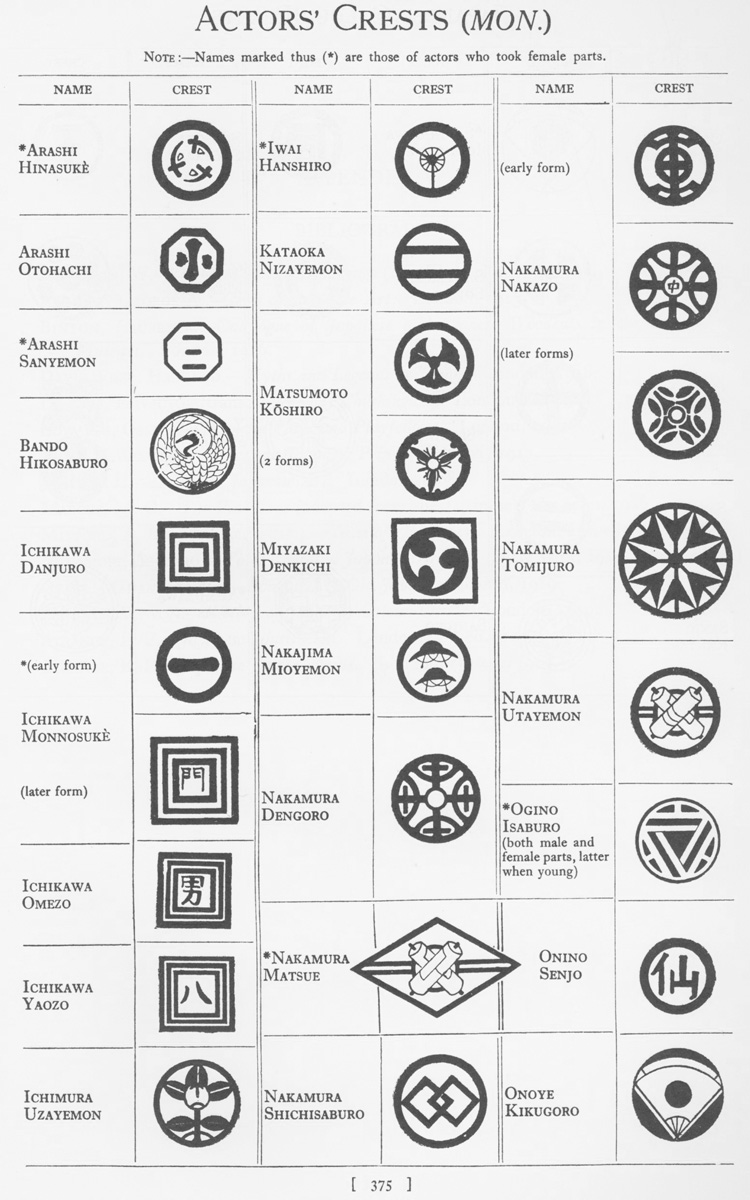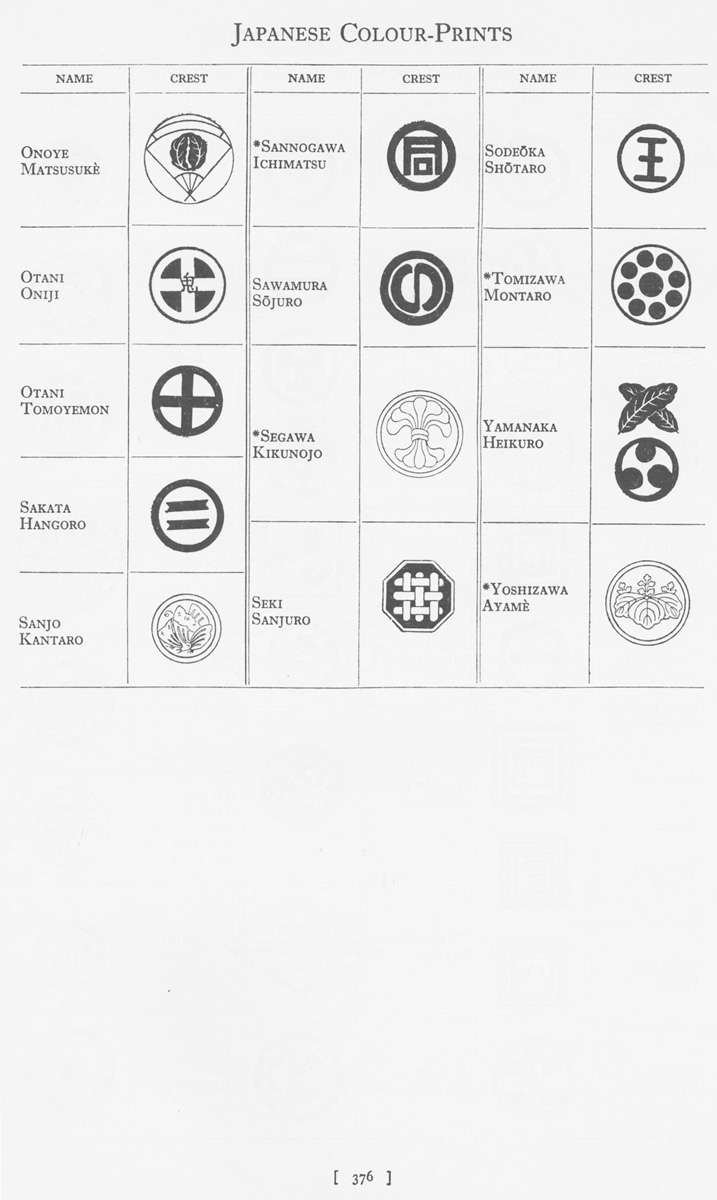 |  Onoe crest Onoe crest |  |
"Mon, or heraldic crests, were widely used among the samurai to identify their possessions and accouterments, and this practice was adopted as well by the Kabuki actors, with the mon often forming a striking decorative pattern on their robes. In the prints, this crest is often the only positive key to identifying the actor. Since several generations of actors often used the same mon, specific identification of the individual actor may well require a study of the dating of the print from other angles (printing, coloring, artist, Kabuki chronology, style, etc.)"1
"Each mon was originally selected for a very specific reason. The three boxes of the Ichikawa crest supposedly represent three measures of rice by a fan to Ichikawa Danjūro I. The twofold fan with a picture of overlapping oak leaves that constitutes the crest of the Onoe family (also known as the Otowaya line) is said to commemorate the gift of rice cakes, wrapped in oak leaves and placed on a fan, presented by the shogun to Onoe Kijugorō I. An interesting crest is that of the Nakamura Utaemon line; it shows two scrolls, one lying across the other, within a circular pattern that is styled after an amulet called a gion mamori. The crossed scrolls are thought to symbolize a crucifix, for Utaemon III was rumored to be a secret Christian."2
"On the stage, mon are frequently seen in jidaimono [historical] plays. The great lords (daimyo) wear them on their kimono and use them to decorate the sliding doors of their rooms and the walls of their tents. Historical characters, where they are identifiable, wear the correct mon of their families, e.g., the Minamoto, the Tokugawa etc., and it is interesting to note that, when political censorship required the playwright to give his characters fictitious names and set the time of the action in a different age, the practice grew up of giving the characters, nevertheless, the corret mon of the persons about whom the
Crests appearing in Halford's The Kabuki Handbook
Crests appearing in Self's and Hirose's Japanese Art Signatures: A Handbook and Practical Guide
1 Images from the Floating World: The Japanese Print, Richard Lane, Konecky & Konecky, 1978, p. 205.
2 Kabuki Encyclopedia, An English-Language Adaption of Kabuki Jiten, Samuel L. Leiter, Greenwood Press, 1979, p. 5.
3 The Kabuki Handbook, Aubrey S. & Giovanna M. Halford, Charles E. Tuttle Company, 12th printing 1981, p. 441.
"Each mon was originally selected for a very specific reason. The three boxes of the Ichikawa crest supposedly represent three measures of rice by a fan to Ichikawa Danjūro I. The twofold fan with a picture of overlapping oak leaves that constitutes the crest of the Onoe family (also known as the Otowaya line) is said to commemorate the gift of rice cakes, wrapped in oak leaves and placed on a fan, presented by the shogun to Onoe Kijugorō I. An interesting crest is that of the Nakamura Utaemon line; it shows two scrolls, one lying across the other, within a circular pattern that is styled after an amulet called a gion mamori. The crossed scrolls are thought to symbolize a crucifix, for Utaemon III was rumored to be a secret Christian."2
"On the stage, mon are frequently seen in jidaimono [historical] plays. The great lords (daimyo) wear them on their kimono and use them to decorate the sliding doors of their rooms and the walls of their tents. Historical characters, where they are identifiable, wear the correct mon of their families, e.g., the Minamoto, the Tokugawa etc., and it is interesting to note that, when political censorship required the playwright to give his characters fictitious names and set the time of the action in a different age, the practice grew up of giving the characters, nevertheless, the corret mon of the persons about whom the
 | play was written. Thus in Kanadehon Chushingura, the lord Enya Hangan (a fictitious name) always wears the crossed feather mon of Asano Takumi-no-Kami Naganori, daimyo of Ako, [shown on the left] the subject of the famous scandal in 1701 on which the play is based." |
Crests appearing in Richard Lane's Images from the Floating World: The Japanese Print
| click on image to enlarge (Images from the Floating World: The Japanese Print, Richard Lane, Konecky & Konecky, 1978, p. 206-207.) |
Crests appearing in Halford's The Kabuki Handbook
| click on image to enlarge (The Kabuki Handbook, Aubrey S. & Giovanna M. Halford, Charles E. Tuttle Company, 12th printing 1981 p. 397-399.) | click on image to enlarge (The Kabuki Handbook, Aubrey S. & Giovanna M. Halford, Charles E. Tuttle Company, 12th printing 1981 p. 400-402.) |
Crests appearing in Self's and Hirose's Japanese Art Signatures: A Handbook and Practical Guide
| click on image to enlarge (Japanese Art Signatures: A Handbook and Practical Guide, James Self and Nobuko Hirose, Floating World Editions, 2011, p. 288-290.) | click on image to enlarge (Japanese Art Signatures: A Handbook and Practical Guide, James Self and Nobuko Hirose, Floating World Editions, 2011, p. 288, p. 291-292.) |
Crests appearing in Stewart's A Guide to Japanese Prints and Their Subject Matter
| click on image to enlarge (A Guide to Japanese Prints and Their Subject Matter, Basil Stewart, Dover Publications, Inc., 1979, p. 375.) | click on image to enlarge (A Guide to Japanese Prints and Their Subject Matter, Basil Stewart, Dover Publications, Inc., 1979, p. 376.) |
1 Images from the Floating World: The Japanese Print, Richard Lane, Konecky & Konecky, 1978, p. 205.
2 Kabuki Encyclopedia, An English-Language Adaption of Kabuki Jiten, Samuel L. Leiter, Greenwood Press, 1979, p. 5.
3 The Kabuki Handbook, Aubrey S. & Giovanna M. Halford, Charles E. Tuttle Company, 12th printing 1981, p. 441.
last revision:
11/20/2018
